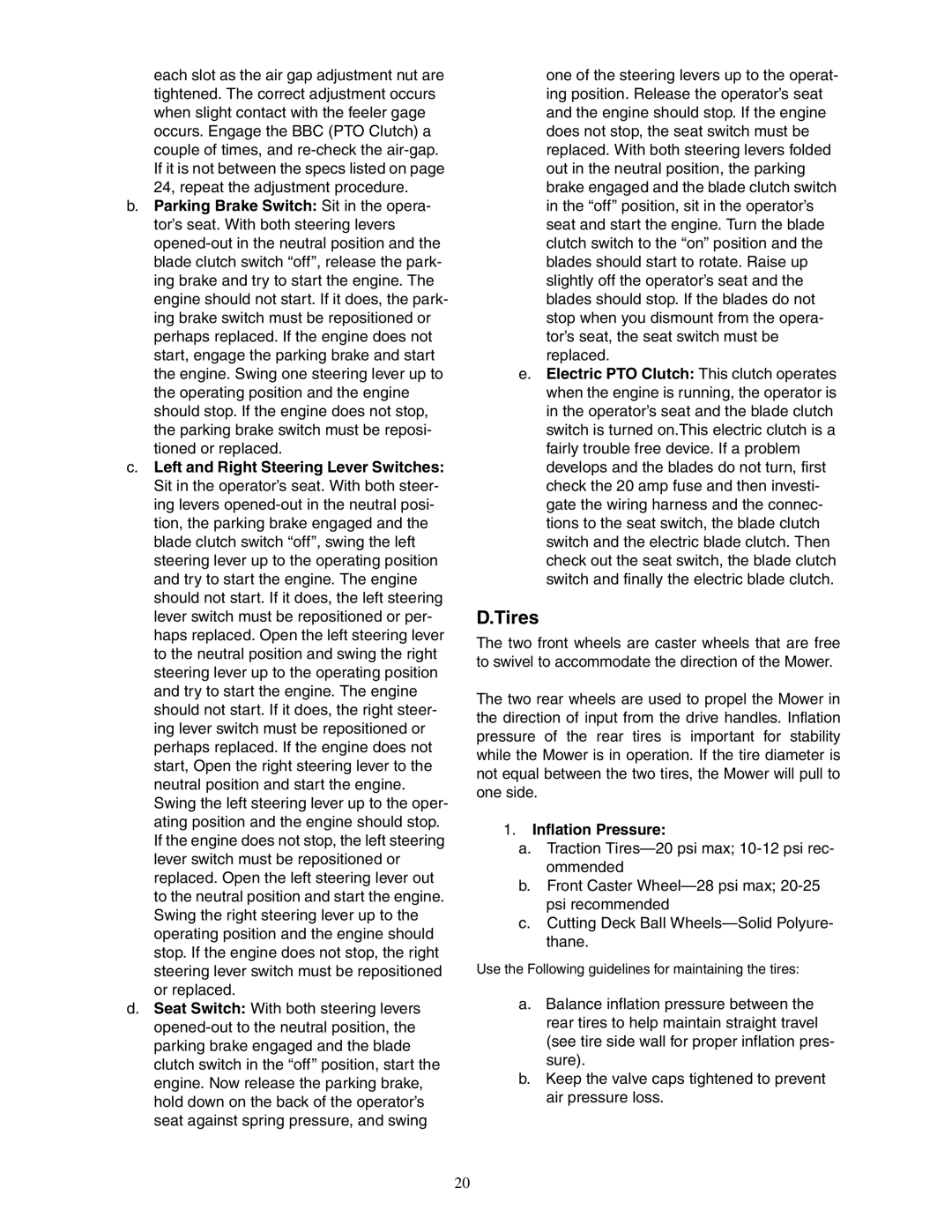each slot as the air gap adjustment nut are tightened. The correct adjustment occurs when slight contact with the feeler gage occurs. Engage the BBC (PTO Clutch) a couple of times, and
b.Parking Brake Switch: Sit in the opera- tor’s seat. With both steering levers
c.Left and Right Steering Lever Switches: Sit in the operator’s seat. With both steer- ing levers
d.Seat Switch: With both steering levers
one of the steering levers up to the operat- ing position. Release the operator’s seat and the engine should stop. If the engine does not stop, the seat switch must be replaced. With both steering levers folded out in the neutral position, the parking brake engaged and the blade clutch switch in the “off” position, sit in the operator’s seat and start the engine. Turn the blade clutch switch to the “on” position and the blades should start to rotate. Raise up slightly off the operator’s seat and the blades should stop. If the blades do not stop when you dismount from the opera- tor’s seat, the seat switch must be replaced.
e.Electric PTO Clutch: This clutch operates when the engine is running, the operator is in the operator’s seat and the blade clutch switch is turned on.This electric clutch is a fairly trouble free device. If a problem develops and the blades do not turn, first check the 20 amp fuse and then investi- gate the wiring harness and the connec- tions to the seat switch, the blade clutch switch and the electric blade clutch. Then check out the seat switch, the blade clutch switch and finally the electric blade clutch.
D.Tires
The two front wheels are caster wheels that are free to swivel to accommodate the direction of the Mower.
The two rear wheels are used to propel the Mower in the direction of input from the drive handles. Inflation pressure of the rear tires is important for stability while the Mower is in operation. If the tire diameter is not equal between the two tires, the Mower will pull to one side.
1.Inflation Pressure:
a.Traction
b.Front Caster
c.Cutting Deck Ball
Use the Following guidelines for maintaining the tires:
a.Balance inflation pressure between the rear tires to help maintain straight travel (see tire side wall for proper inflation pres- sure).
b.Keep the valve caps tightened to prevent air pressure loss.
20
